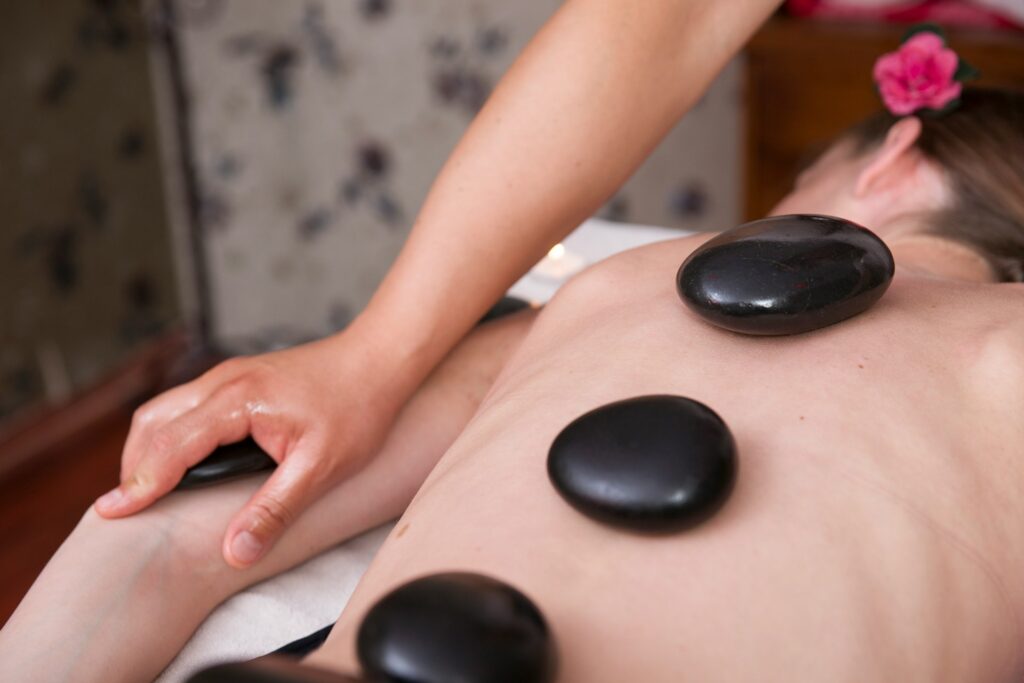Faq
Frequently Asked
Questions
Massage therapy involves manipulating the soft tissues of the body to promote relaxation, improve circulation, and relieve tension.
Benefits include stress reduction, improved circulation, pain relief, enhanced flexibility, and improved overall well-being.
It can help with stress, anxiety, muscle tension, chronic pain, headaches, sports injuries, and postural imbalances.
Generally, yes. However, individuals with certain medical conditions should consult their doctor before receiving a massage.
Frequency depends on your goals and needs, but once a month is common for general maintenance.


Wear what makes you comfortable. Many people undress to their level of comfort; you will always be draped appropriately.
Sessions typically range from 30 to 90 minutes, depending on your needs.
You’ll fill out a health history form, discuss your goals with the therapist, and receive a tailored massage in a private and comfortable setting.
Some discomfort can occur with deep tissue or therapeutic massages, but it should be tolerable. Communicate with your therapist if it’s too much.
It’s up to you. Some people prefer silence, while others feel more relaxed chatting. Therapists will follow your lead.
Drink water, rest, and avoid strenuous activity to maximize the benefits of the session.
Mild soreness is normal, especially after deep tissue work. This usually subsides within 24-48 hours.
It varies. Relaxation effects may last a few days, while pain relief can last longer with consistent sessions.
While massage can aid circulation and lymphatic drainage, the term “detox” is often overstated. The body’s organs do most detoxifying.
Light activities are fine, but heavy workouts or intense tasks should wait for a few hours.
Swedish is gentle and relaxing, while deep tissue focuses on deeper muscle layers and alleviates chronic pain or tension.
A therapeutic technique using heated stones to relax muscles and improve circulation.
A massage tailored to the needs of pregnant individuals, helping reduce discomfort and improve relaxation.
A technique that applies pressure to specific points on the feet, hands, or ears, believed to correspond to different body systems.


A massage designed for athletes, focusing on injury prevention, performance enhancement, and recovery.
Prices vary by location and type but usually range from $150 to $250 per session.
Some health plans cover massage therapy, especially if prescribed by a doctor. Check with your provider.
Tipping is customary in spas and wellness centers (15–20% is common), but not always expected in medical settings.
Usually no, but some insurance plans or medical situations may require it.
Look for credentials, experience, and reviews. Ensure the therapist is licensed or certified in your area.
Yes, prenatal massages are designed for pregnant individuals. Always inform your therapist of your pregnancy.
Yes, avoid massage if you have a fever, infection, open wounds, or certain medical conditions. Consult your doctor if unsure.
Yes, but the session should be tailored to their age and needs, often with a guardian present.
Mention any health conditions, injuries, allergies, or areas to avoid.
No, it’s a complementary therapy that supports, but doesn’t replace, medical care.
Yes, regular massages can help reduce stress hormones, promote relaxation, and improve mood, making it a helpful complementary therapy for mental health concerns.
Yes, many cultures have their own techniques, like Thai massage, Shiatsu from Japan, Ayurvedic massage from India, and Lomi Lomi from Hawaii. Each offers unique benefits and experiences.
Absolutely! Always communicate your preference for light, medium, or deep pressure. The therapist will adjust to your comfort level.






